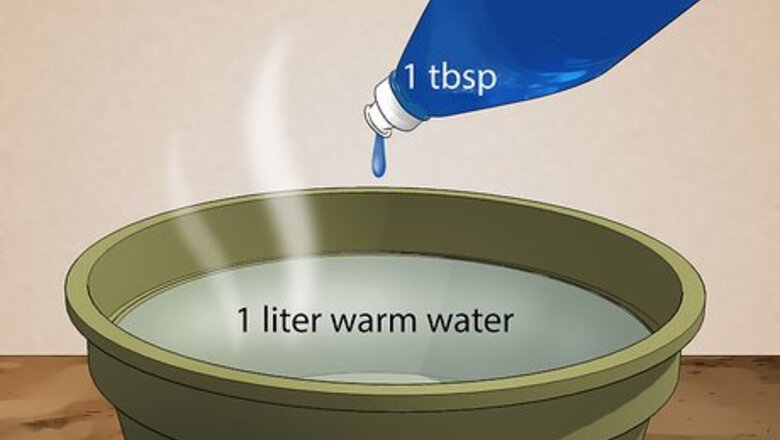
views
Painted or Stained Wood
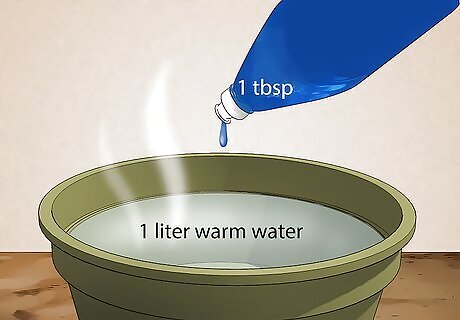
Combine dishwashing detergent and warm water. Squirt about 1 teaspoon (4.9 mL) of mild dish soap into a spray bottle filled with warm water. Shake up the bottle until the contents are well mixed. If you don’t have a spray bottle, mix up the water and dish soap in a clean bucket. If you prefer, you can use a commercial cleanser designed to kill mold instead. These cleansers, which are typically made with ammonia, are available at most home improvement stores. However, be careful and test the cleanser in an inconspicuous spot first to make sure it doesn’t damage the painted or stained surface.
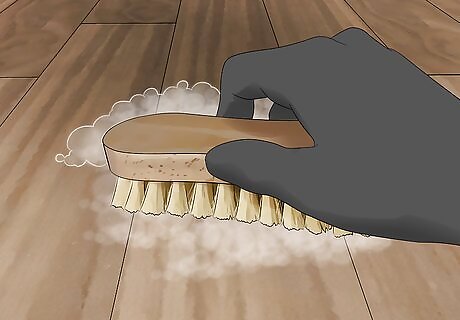
Scrub off the mold with soapy water and a brush. Spritz your cleanser directly onto the moldy surface using the spray bottle. Then, gently scrub the area clean with a soft-bristled brush until you can’t see any more mold. As you work, sop up excess moisture with a sponge or cloth. Try not to saturate the area with water, as excess moisture can enable new mold growth. Only spray on enough to lightly dampen the surface so you can scrub the mold away.
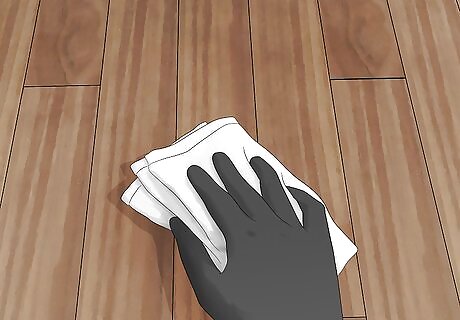
Dry the area using a clean rag. Check the affected wood for any mold that hasn’t been cleaned away. If the area appears to be free of mold, wipe all of the wood down with a rag or clean towel to ensure that it’s dry. Any lingering moisture could cause the mold to come back, so dry the area as thoroughly as you can. If possible, turn on a dehumidifier or aim a fan at the cleaned surface to help speed up the drying process.
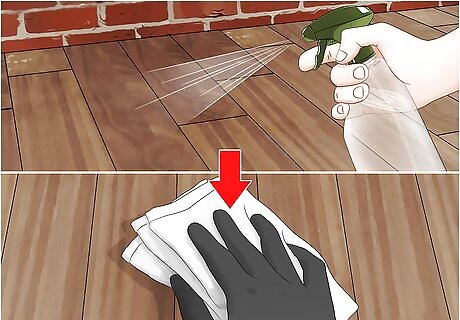
Use vinegar to remove the mold if soapy water doesn’t work. Fill a spray bottle with undiluted vinegar. Spray it over the affected area and wait for 1 hour. Then, wipe the area down with a clean, damp rag or towel to remove the mold. Don't worry about the smell of the vinegar. This will disappear as it dries.
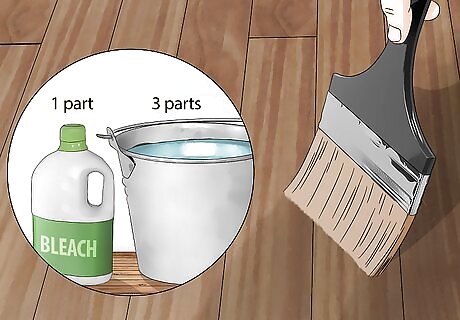
Try a bleach solution if nothing else works. For extra stubborn mold or mildew, mix 1 part bleach with 3 parts water in a bucket. Paint the bleach directly onto the moldy surface with a paintbrush and let it dry. The bleach should kill the mold and cause it to disappear. If you still see dark staining on the surface, it’s probably dirt. Try going over it again with soapy water and a scrub brush. Fortunately, bleach won’t damage most painted or stained surfaces, although it will damage wallpaper. If you’re worried, test the diluted bleach mixture in an inconspicuous spot before spraying it on the mold.
Raw Wood
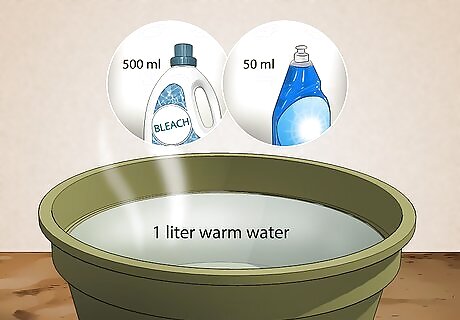
Mix together bleach and warm water. In a clean bucket, stir together 1 cup (240 mL) of bleach and 1 gallon (3.8 L) of warm water. To protect your hands and clothes, wear long, bleach-safe rubber gloves and put on an apron or old shirt. Always use bleach in a well-ventilated area. If you’re indoors, open the doors and windows to let in fresh air. Never mix bleach with other detergents or cleaning solutions, especially cleansers that contain ammonia! When bleach mixes with ammonia, it creates extremely toxic fumes.

Scrub the mold using the bleach solution. Dip a stiff-bristled brush into the bucket with the bleach solution. Use the brush to scrub the mold from the surface of the raw wood, then let the bleach solution air dry once the mold has been removed. To speed up the drying process, aim a fan at the surface. Don’t wipe or rinse away the bleach so that it has a chance to soak in and kill mold beneath the surface of the wood.
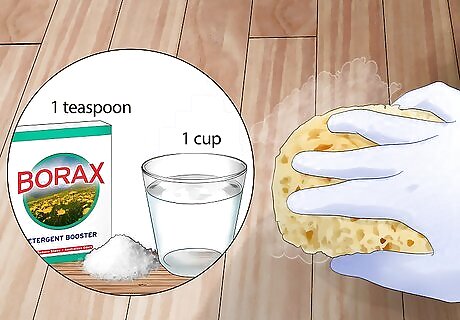
Use borax or an ammonia-based cleaner as bleach alternatives. Some home improvement experts don’t recommend using a bleach solution on raw wood, since the mold-killing bleach itself may not penetrate into the wood very well. If you’re concerned about this, try one of the following alternatives: Mix 1 teaspoon (8 g) of borax powder with 1 cup (240 mL) of water. Scrub the area with this mixture, then let it air dry without rinsing or wiping away the borax. Use a fan to speed the drying process. Use an ammonia-based commercial mold and mildew cleaner, which may do a better job killing mold below the surface of the wood. Or, make a solution of 1 part ammonia to 4 parts water. Thoroughly rinse and dry the surface when you’re done, or follow the instructions on the cleanser packaging.
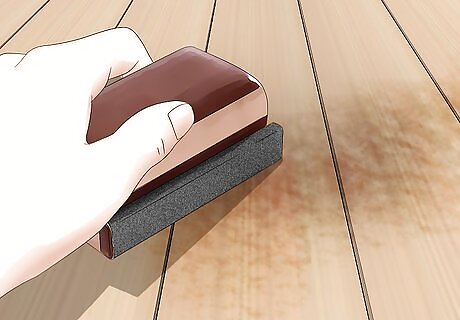
Sand the wood if the bleach solution didn’t remove the mold. Using sandpaper is an ideal next option, as it will remove the surface that the mold is growing on. Use fine grit sandpaper and go over the affected part of the wood. Continue sanding until you can no longer see any mold. Wear a respirator mask and safety goggles to protect your lungs and eyes from spores that come loose during the sanding process. When you’re done, vacuum the area to pick up the mold-contaminated sawdust. Use a vacuum cleaner with a HEPA filter, and dispose of the vacuumed material outdoors in a sealed plastic bag.
Safety Precautions
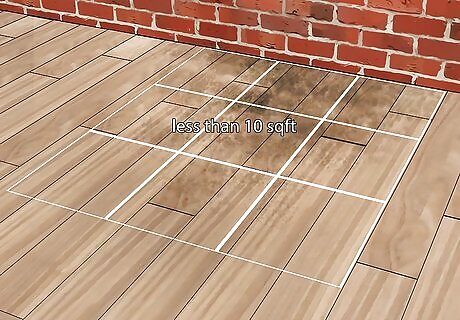
Check that the area of mold is smaller than 10 sq ft (0.93 m). Estimate how much of the wood surface is covered with mold. If it is only a small amount, it’s likely that you will be able to clean the mold yourself. However, if the area is larger than 10 sq ft (0.93 m), or about 3 feet (0.91 m) by 3 feet (0.91 m), contact a mold remediation professional instead. If you are unsure about whether you can clean the mold yourself, contact a professional to be on the safe side. To find a mold remediation pro, do a search using terms like “mold removal near me” or “mold remediation services in my area.”
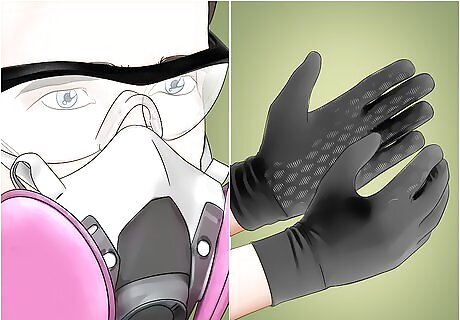
Put on rubber gloves, a respirator, and safety goggles before you begin. Wear protective gear at all times to keep yourself safe while you are cleaning up mold. Use rubber gloves and a respirator mask, such as an N95 respirator, that can filter out airborne particles. If your respirator doesn’t include eye protection, you’ll also need safety goggles that are designed to fit snug against your face and filter out small particles and dust. If you are going to be using bleach, wear gloves made of a bleach-resistant material, like natural rubber, neoprene, or polyurethane. Put on old clothes that you don’t mind getting damaged, or cover up with a protective layer, like an apron or an old button-up shirt. Exposure to mold can cause health problems such as coughing and skin, eye, or throat irritation. Wearing proper protective gear will help keep you safe.
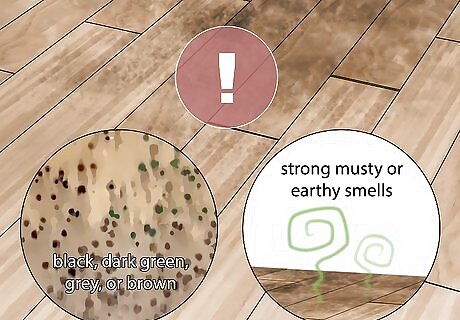
Be extra cautious if you suspect black mold. If you find what you think is black mold in your house, be extremely careful to wear full protective gear and follow all safety precautions so that you don’t get sick. Often, it’s best to call a professional who can take care of the problem for you and assess other safety issues that you may have missed. To recognize black mold: Make note of any strong musty or earthy smells. It’s often possible to smell black mold before you see it. Check for mold that is black, dark green, grey, or brown. While wearing gloves and a respirator mask, rub the mold with a paper towel to get a sense of its texture. While other molds are often powdery or fuzzy, mature black mold is usually slimy and wet.
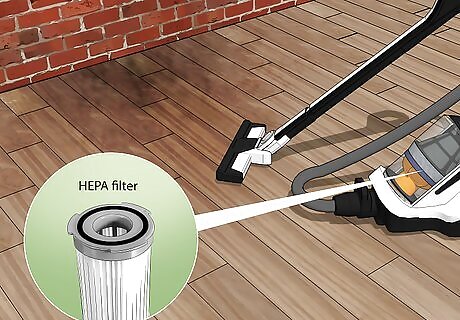
Vacuum the area first if the mold is indoors. Use a vacuum cleaner that has a HEPA filter, as this is the best for picking up very small particles of mold. Vacuum the entire area to remove any dust, debris, and loose spores. Vacuuming will minimize the quantity of spores you stir up during the cleaning process. Use the soft brush attachment on the vacuum cleaner when cleaning surfaces such as furniture, cabinets, or wood paneling. Ensure that you vacuum all drawers, panels, and crevices. Make sure that you are outside when you empty the vacuum cleaner canister or bag. Tip the contents into a plastic bag and tie it up tightly. Dispose of the bag right away in an outdoor trash container.
Preventative Measures
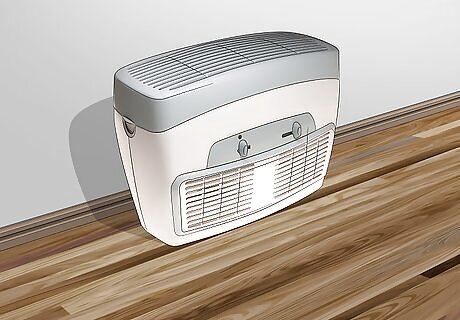
Dry the cleaned areas using a dehumidifier or a fan. Once you have removed all of the mold from the wood in an area, make sure it is properly dry to prevent the mold from returning. Unless you’re using a method that involves letting the cleanser sit on the surface and air dry, wipe away moisture right away with a clean towel or rag. Turn on a fan, dehumidifier, or heat drying system to speed up the drying process. Check the wood in the area for mold again after 3 days. If you notice it returning, either clean the area again or contact a professional.
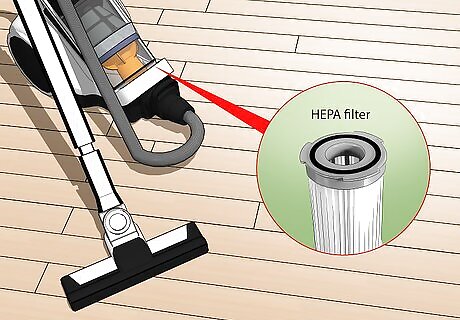
Vacuum the area to remove any loose mold spores. Use a vacuum cleaner that has a HEPA filter again and thoroughly vacuum the area where you cleaned the wood. Empty the vacuum cleaner outside into a plastic bag and tie it securely. Vacuuming the area afterward again is necessary because it is likely that mold spores have been stirred up during the cleaning process. Always wear a respirator mask and goggles when you’re disposing of the vacuumed-up mold. When you’re done, throw away the HEPA filter and replace it with a new one. Put the filter in a sealed plastic bag and throw it away outside.
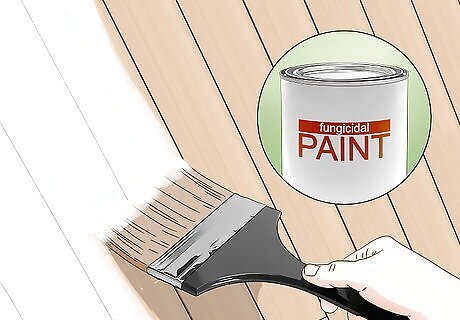
Apply a fungicidal paint or sealant to prevent the mold from returning. If you are concerned that the mold will return, then applying a fungicidal seal will give you peace of mind. Purchase a treatment from a home improvement store. Follow the instructions closely to apply it to the wood. A fungicidal paint or sealant will stop any hidden, existing mold from growing through and it will also prevent future mold growth on top of the seal.
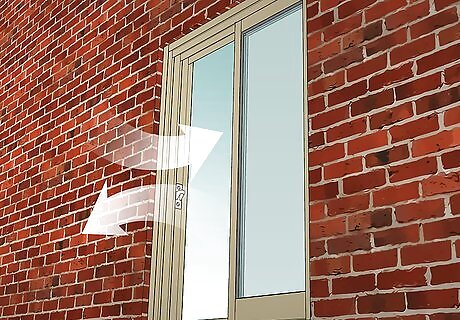
Keep the area well-ventilated to prevent mold from returning. Open the windows regularly and use air conditioning in humid weather to reduce the humidity to below 40%. Use a dehumidifier in cooler weather to remove condensation. This is especially important for wood in areas that have a lot of moisture, such as kitchens and bathrooms.

















Comments
0 comment